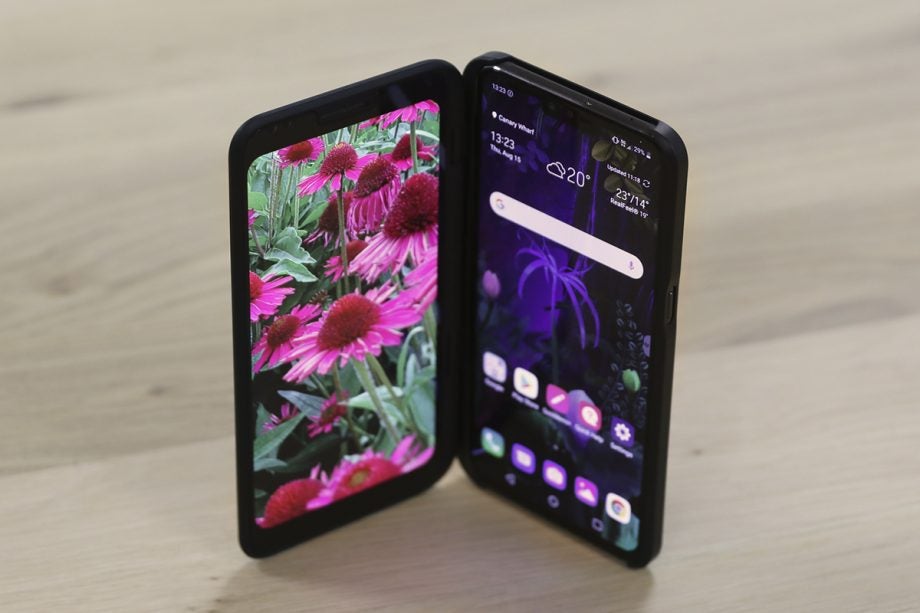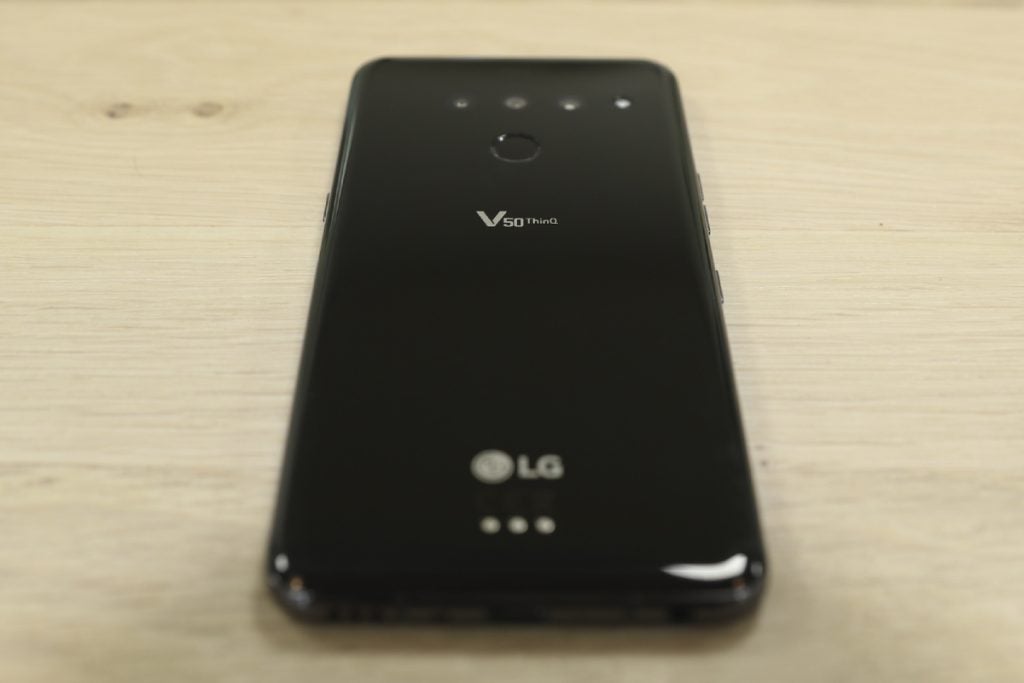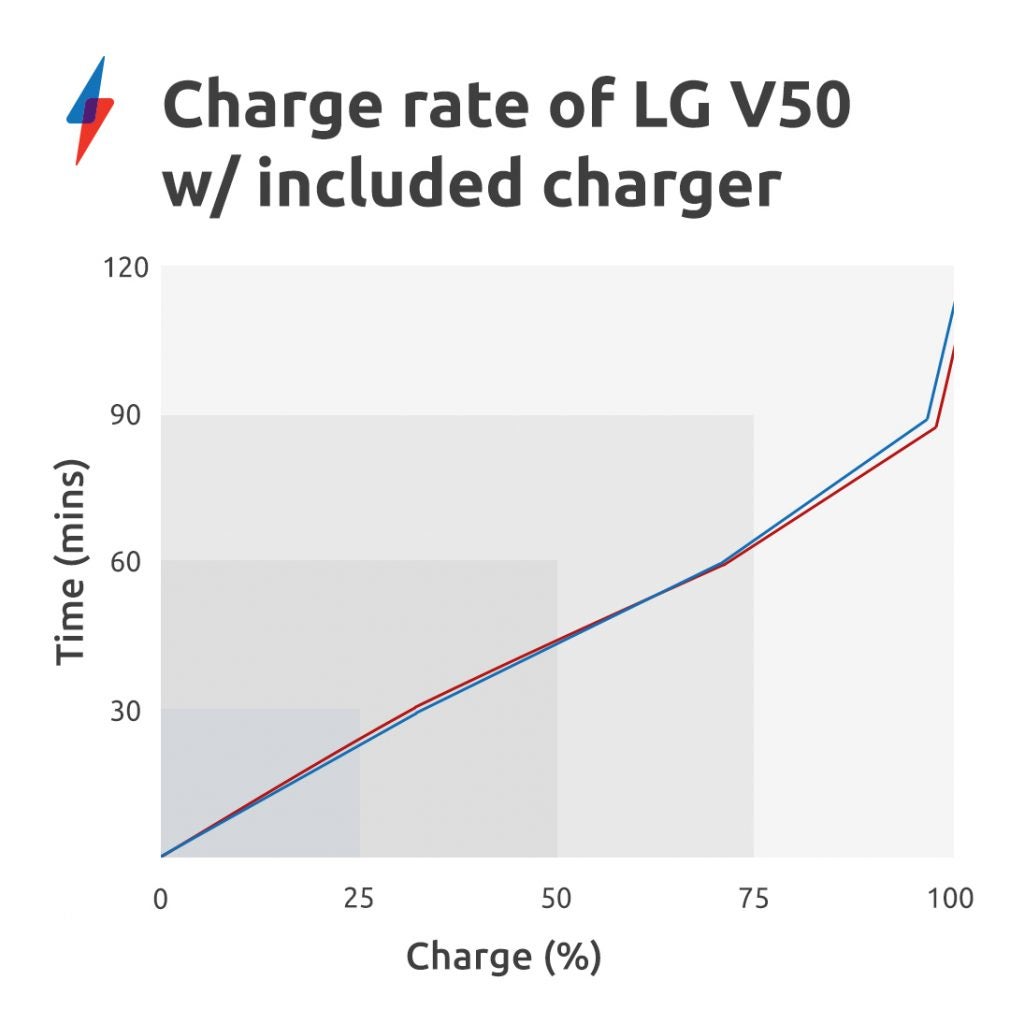LG V50 ThinQ Review - Battery Life Review
Battery Life
LG V50 battery life review

Sections
- Page 1 LG V50 ThinQ Review
- Page 2 Camera Review
- Page 3 Battery Life Review
- Page 4 Performance Review
- Page 5 Screen Review
The LG V50 features a decent-sized battery but lacklustre fast charging
- The LG V50 boasts a significantly larger 4000mAh battery than its predecessor, the LG V40 (3300mAh)
- The phone sports 18W fast wired charging as well as basic wireless charging
- In testing, the phone possesses decent longevity, despite having to occasionally power a second screen – recharging was a little slow, though
The main reason to complain about the LG V50 is that it does little to set itself apart as a true successor to last year’s LG V40. One area where it has received a notable upgrade, however, is battery capacity. LG has upped the cell size from 3300mAh to 4000mAh, which is certainly appreciated.
LG was behind the curve last year when it fitted such a small battery inside such a demanding, high-end device, while its then rivals, such as the Samsung Galaxy Note 9, possessed far larger power packs. The gap isn’t as big this year but the V50’s still feels on the smaller side, especially when you consider that the phone has to be able to support a secondary display (depending on usage).

For reference, competitors like the Huawei P30 Pro (4200mAh) and newcomers like the Samsung Galaxy Note 10 Plus (4300mAh) and Asus ROG Phone 2 (6000mAh) all boast bigger batteries by comparison.
As general usage goes, with the phone’s Dual Screen accessory attached, I finished most days at between 30% and 15%. This is better than I was expecting, considering the screen is one of the most power-intensive components on the phone. The V50 thus has enough juice to last most users a full day without worry.
With both screens attached, the V50 doled out approximately four hours of screen-on time. Detach the second screen and the phone will last for up to 4.75 hours of screen-on time as a standalone device, with the potential to take you into lunchtime the following day.
Removing the second screen and leaving brightness set to auto (which meant the display usually idled at around 70% brightness) resulted in a 12% drain from an intense 3D game like Asphalt 9 over the course of half an hour. In the same time frame, a more casual, less demanding title like Alto’s Odyssey sapped 7% charge, while Full HD video playback over 5G consumed 6% of the V50’s total power.

As for refilling the phone, this is another area where the V50 feels as though it falls short of the mark. Compared to aforementioned competitors like the P30 Pro (40W) and Note 10 Plus (up to 45W), the included 18W Quick Charge-compliant adapter felt a little underwhelming.
The phone will charge from empty in around an hour and 50 minutes. However, the phone surpasses 50% charge only after 45 minutes charge time. Based on these speeds, LG clearly has some catching up to do. At least the phone features wireless charging, although there’s no reverse wireless charging, as found on some of the competition.


